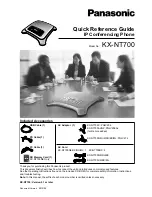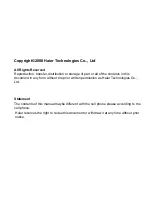
LGE Internal Use Only
Copyright © 2008 LG Electronics. Inc. All right reserved.
Only for training and service purposes
3. TECHNICAL BRIEF
- 38 -
3.9.4 Advanced power management unit (PMU)
The dynamic PMU optimizes power consumption of the STn8810. It delivers all the platform clocks,
and handles reset management. It also manages GPIO levels during sleep mode and emergency self-
refresh of SDRAM.
The PMU controls the external voltage regulator, in order to change its settings in different modes.
In deep-sleep mode, only GPIOs, the real-time clock (RTC), system and reset controller (SRC), PMU
and secured RAM remain in operation. The PMU also controls the embedded 1.2 V voltage switch that
switches off the logic supply after the platform has entered sleep mode.
The family of power manager ICs, STw481x companion chips, seamlessly interface with the Nomadik
STn8810 and optimize global system power consumption leveraging on the PMU.
3.9.5 Host port interface (HPI)
The host port interface features:
■
16-bit parallel data bus
■
Multiplexed and non-multiplexed address/data bus
■
Indirect host access
■
Direct host access to a segment of STn8810 memory in multiplexed mode
3.9.6 General purpose inputs/outputs (GPIOs)
The STn8810 provides 96 programmable inputs or outputs that have switchable pull-up and pull-down
resistors and are controllable in two modes:
■
Software mode through an APB bus interface
■
Hardware mode through a hardware control interface
The GPIO interface provides the following individually programmable functions:
■
Any number of pins may be configured as interrupt sources
■
Debouncing logic can be enabled for each GPIO to filter out glitches on I/Os
■
Any GPIO may be used to wake up the device from sleep mode independent of interrupt
programming, and the input level that triggers wake-up is definable for each enabled GPIO
Summary of Contents for KT610
Page 1: ...Date June 2008 Issue 1 0 Service Manual Model KT610 Service Manual KT610 Internal Use Only ...
Page 233: ...Note ...
Page 234: ...Note ...
















































